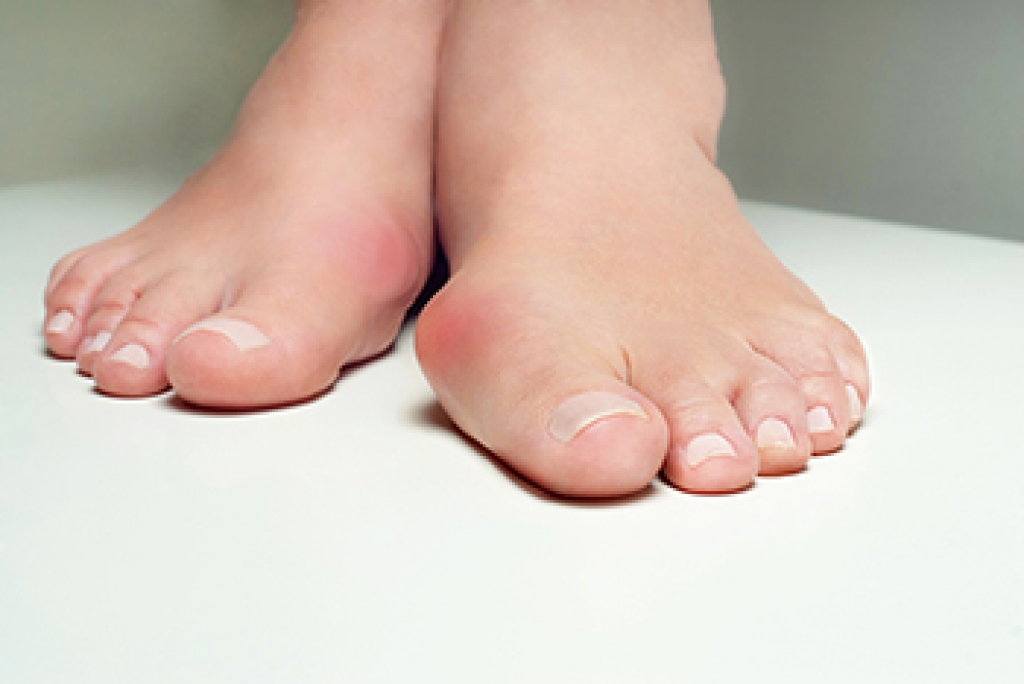
A bunion is a noticeable bony protrusion that develops on the side of the big toe and can be unsightly. As it gradually forms, it can put pressure on the joint at the base of the big toe, which may push it toward the second toe. Some patients have swelling, redness, and general foot pain as a result of a developing bunion. If the bunion is not treated promptly, it may become difficult to wear shoes that are generally worn, and larger shoes may need to be purchased. Research has indicated people may have bunions from genetic reasons, or from wearing shoes that do not fit correctly. Foot structure may play a significant factor in getting a bunion, and calluses can form as toes rub against each other or the shoe. If you see the signs of a bunion starting to form, it is strongly advised that you seek the counsel of a chiropodist who can offer you correct treatment options.
Bunions progressively worsen over time and may cause walking in your shoes to become difficult. To learn more about bunions, please consult with one of the specialists from Thornhill Foot Clinic. Our chiropodists will assess your condition and provide you with quality foot and ankle treatment.
What Are Bunions?
A bunion is a bony bump that protrudes from the base of the big toe. Bunions are caused due to a misalignment of the first metatarsal. The characteristic bump of a bunion forms when the metatarsal shifts outwards from its proper position. Bunions develop slowly over time and progressively worsen without treatment. The skin over the bunion may develop calluses due to the friction from shoes. Eventually, a bunion can make walking uncomfortable or even painful. Bunions are one of the most common foot deformities and are especially common in women and older adults.
Symptoms
A bunion appears as a bulging bump on the outside of the base of the big toe.
The bunion may also:
- Be swollen, red, or sore
- Develop corns or calluses over it
- Cause pain
- Limit the big toe’s range of motion
Treatment
There are several different treatments available for bunions. Conservative treatment options include wearing shoes with a wider toe box, cushioning the bunion with a specialized pad, wearing shoe inserts, icing the bunion if it becomes inflamed, and taking medications to relieve pain. In more severe cases, more invasive procedures may be done. This may involve removing the swollen tissue around the bunion, straightening the big toe, realigning the bones at the front of the foot, or a combination of these procedures.
If you have any questions, please feel free to contact our office located in . We offer the newest diagnostic and treatment technologies for all your foot care needs
